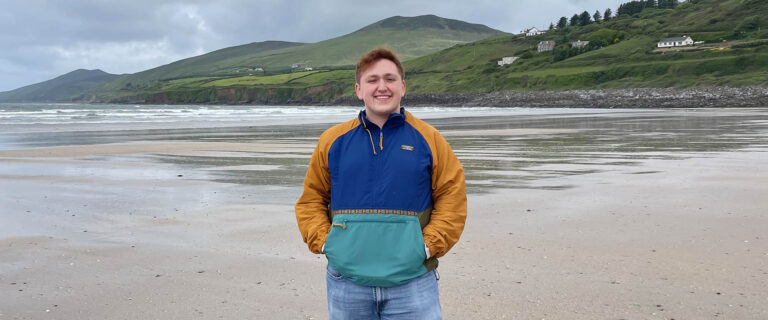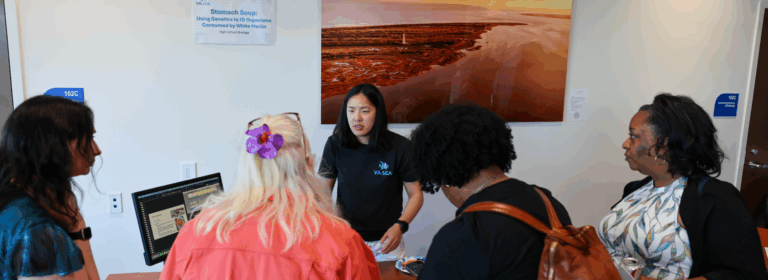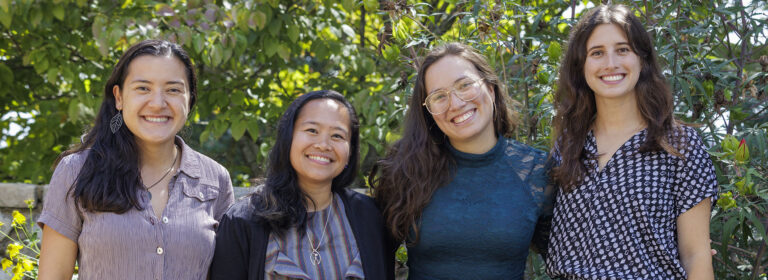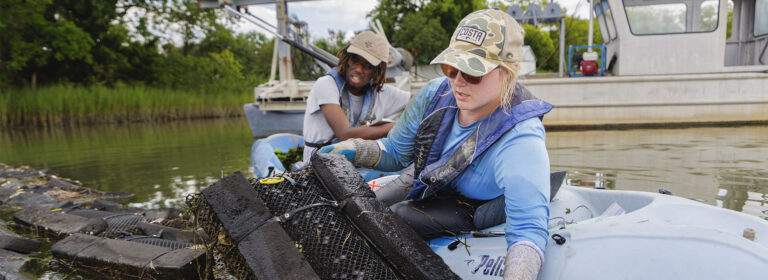Team Science Brings together Multiple Disciplines to Tackle Big Problems
Virginia Sea Grant hosted 32 graduate and post-graduate students for two Team Science workshops designed to teach effective problem-solving strategies while working in transdisciplinary teams. The workshop is part of an NSF grant-funded partnership between VASG, Virginia Institute of Marine Science, Virginia Commonwealth University, University of Virginia, and University of Central Florida.
Finding solutions to complex challenges facing coastal and marine communities often requires a multidisciplinary approach. Experts in fields like engineering, architecture, economics, marine science, coastal dynamics, and resilience design are needed to identify key problem areas and create effective, innovative breakthroughs that transcend any single area of expertise. Virginia Sea Grant’s Team Science workshops are designed to give them the tools they are going to need to do this effectively.
“The tool kit from any one discipline is not big enough, not broad enough for the problems we’re facing,” said Virginia Sea Grant Director Troy Hartley. “It’s going to be this next generation of researchers and scientists who will need to work together at their universities, integrate what they know, and come up with an idea that none of them could have by themselves.”
What is Team Science?
Team Science workshops bring together students from a variety of majors who typically would not interact under normal circumstances. They are divided into several multi-disciplinary teams and all assigned the same team project — in this case addressing resilience design challenges in the city of Hampton, Virginia — with the goal of developing conceptual frameworks, research questions, and applied solutions that can help local communities.
It would be easy to assume that this common-sense approach would be commonplace, but it’s not a model typically followed by university faculty and researchers.
“None of us as faculty members work like this — it would be a stretch,” said instructor Deborah DiazGranados, an associate professor at Virginia Commonwealth University’s School of Medicine. “Here, we’ve created a controlled space where students can learn some practices, some vocabulary, and take it back into their real workspace to use during their graduate studies and in their professional careers.”
For many of the students, this was their first experience with the Team Science concept, but all were eager to collaborate with others, problem-solve, and learn new ideas.
“I’ve never encountered the term before. I was curious about what it was,” said Jem Baldissimo, a Ph.D. candidate studying Ecological Sciences at Old Dominion University. “I’m really interested in the aspect of working with and collaborating with people outside of your background, I think that’s a very transferable skill.”
“I was quite interested in the interdisciplinary tasks that we would have to do together — bringing different graduate students across different disciplines to pull from their own expertise, and to use their expertise to solve a common problem,” said Samuel Daramola, a Ph.D. candidate at Virginia Tech studying Civil and Environmental Engineering. “That was the real reason why I applied for the program.”
“In order to come up with solutions to challenges like sea level rise, we really need to come at it from multiple disciplines,” said Hannah Mast, a doctoral student at the University of Virginia studying environmental science.
Pre-Workshop Trainings
Before meeting in person as teams, the students attended three virtual training sessions to work on their communication, conflict resolution, and teamwork skills. The first session, hosted by the Alan Alda Center for Communicating Science, introduced the researchers to the principles of responsive listening and empathic communication.
“A really good takeaway from the session was being able to relate to whoever you are talking to in terms of science communication,” Baldisimo said. “Making that connection to the person and using it to make your information accessible is a really good skill to practice and apply.”
Maryam Talebidalouei, a Ph.D. candidate from Iran studying Environmental Engineering at Temple University, felt the virtual sessions improved her skills as a team worker.
“I learned how to explain my expertise to other people who have no idea about what I’m doing in my Ph.D.,” Talebidalouei said. “But I was learning at the same time — how it is okay to make some mistakes… how to collaborate with others, how to share ideas and be your own major’s voice in the group.”
Students also learned conflict resolution strategies during a session hosted by the UVA Institute for Engagement & Negotiation. The session introduced them to conflict styles they may encounter, how to establish group norms and behaviors, and how to deal with uncomfortable situations during a negotiation.
“I learned how to explain my expertise to other people who have no idea about what I’m doing in my Ph.D.,” Maryam Talebidalouei said.
Working in Teams
After the pre-workshops trainings students were brought together for several days to put what they had learned into practice. Meeting their teammates in person for the first time the students were presented with the resilience design challenge and tasked to begin their work together.
Stephanie Arsenault, a Fisheries Ph.D. student at Stony Brook University, pushed herself out of her comfort zone working with teammates with backgrounds in education, architecture, engineering, and public administration. ‘I’ve had to be a lot more patient with myself and be more flexible with communication style and realize when I need to reel it back because I’ve gotten too into the weeds,” said Arsenault, “or when I can give a little bit more detail because they’ve asked clarifying questions.”
“Team science across disciplines and sectors has proven to be really hard to achieve because it is more than adding what is in your head to what is in my head. Rather, it requires merging what is in your head and my head to come up with completely novel ideas,” Hartley said.
The transdisciplinary nature of the teams allowed the students to interact with disciplines they have little to no experience with to create a better understanding of how they can work together.
“I, as a natural sciences guy, have often been stressed out by social science, this has given me an opportunity to interact with social sciences and see how the work they do helps me implement the conclusions I come to in my research,” said Ryan McIntyre, a masters student a George Mason University studying invasion ecology.
“The biggest thing I’ve learned is how to voice my opinion, but also incorporate other people’s opinions,” said Hannah Mast, a Ph.D. student at University of Virginia in Environmental Sciences. “Through this workshop, I’ve got a lot of practice on how to mesh different ideas together and come up with something that is comprehensive and coherent together.”
“If you’re only talking to the people in your field, you can sort of get pigeonholed, I think, and it can really be difficult to communicate across. So, I think it’s a really important thing to step back and talk to people in other disciplines and learn what you can from them because that’s only going to broaden your perspective. I think that’s important in science, but I think it’s essential in conservation,” McIntyre said.
Takeaways:
- Transdisciplinary science is critical to complex problem-solving, particularly in areas of resilience design and conservation.
- Current graduate and post-graduate training does not adequately address the need for students to learn to work interdisciplinary.
- The ability of scientists to work in interdisciplinary teams creates more well-rounded researchers and leads to more comprehensive research questions and studies.
Photos and video by Lathan Goumas | Virginia Sea Grant
Story by Jay Clark and Lathan Goumas | Virginia Sea Grant
Published Month 1, 2021.
“This has given me an opportunity to interact with social scientists and see how the work they do helps me implement the conclusions I come to in my research,” said Ryan McIntyre, a George Mason University masters student studying invasion ecology.





